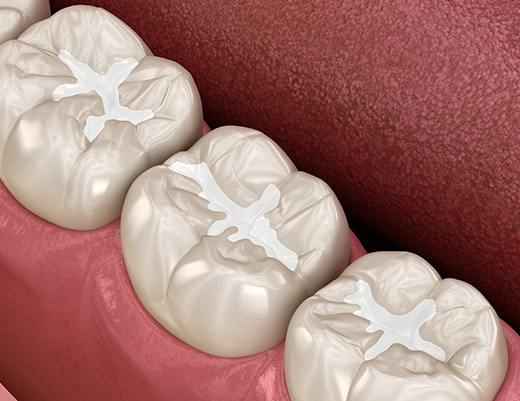Call Us Today : (757) 596-6850
Dental Sealants
A sealant is a thin, plastic coating applied to the chewing surface of molars, premolars, and any deep grooves (called pits and fissures) of teeth. More than 75% of dental decay begins in these deep grooves. A sealant protects the tooth from dental decay by sealing these deep grooves. These protective restorations are a critical step to promoting long term oral health through adulthood.
Our dentists or dental hygienists easily apply the sealants and the process only takes a couple of minutes per tooth but the sealants are very effective.

Sealants are particularly beneficial for children and teenagers as soon as the 6-year molars and 12-year molars appear and throughout the cavity-prone years of 6 to 16.
Children and teenagers - Sealants are particularly beneficial for children and teenagers as soon as the 6-year molars and 12-year molars appear and throughout the cavity-prone years of 6 to 16.
